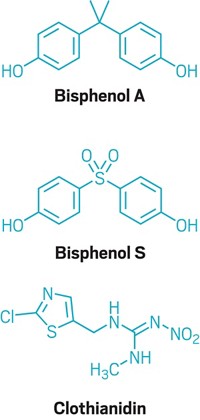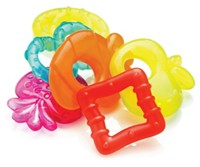Advertisement
Grab your lab coat. Let's get started
Welcome!
Welcome!
Create an account below to get 6 C&EN articles per month, receive newsletters and more - all free.
It seems this is your first time logging in online. Please enter the following information to continue.
As an ACS member you automatically get access to this site. All we need is few more details to create your reading experience.
Not you? Sign in with a different account.
Not you? Sign in with a different account.
ERROR 1
ERROR 1
ERROR 2
ERROR 2
ERROR 2
ERROR 2
ERROR 2
Password and Confirm password must match.
If you have an ACS member number, please enter it here so we can link this account to your membership. (optional)
ERROR 2
ACS values your privacy. By submitting your information, you are gaining access to C&EN and subscribing to our weekly newsletter. We use the information you provide to make your reading experience better, and we will never sell your data to third party members.
Environment
For Preschoolers, Food Is Primary Source of BPA Exposure
Toxic Substances: Scientists detect the endocrine disrupter in the food and urine of young children
by Laura Cassiday
June 3, 2011

Bisphenol A—an estrogen-mimicking chemical found in baby bottles, food containers, and household electronics—has been linked to a host of health problems in animals and people. Now researchers have detected it in the environment and urine of young children, revealing that preschoolers absorb BPA primarily through the food they eat (Environ. Sci. Technol., DOI: 10.1021/es200537u).
Manufacturers use BPA to make plastics and epoxy resins, and BPA can leach from products containing these materials into food, beverages, dust, and air. Numerous studies, mostly conducted on animals, have linked high levels of the endocrine-disrupting chemical to conditions such as cancer, obesity, heart disease, infertility, and neurological disease.
Although scientists think that developing organisms are the most susceptible to BPA’s potential toxic effects, few studies have examined BPA exposure in young children, says Linda Sheldon, associate director at the U.S. Environmental Protection Agency. So in 2000 and 2001, Sheldon, Marsha Morgan, an EPA research scientist, and their colleagues joined forces to measure children’s exposures to BPA and other chemicals in an EPA study called Children’s Total Exposure to Persistent Pesticides and Other Persistent Organic Pollutants (CTEPP). They collected samples of solid and liquid foods, air, dust, and soil from the homes and daycare centers of 257 children between the ages of 2 and 5 in North Carolina and Ohio.
In a paper published in 2007, the researchers showed that the children’s solid and liquid foods contained the highest amounts of BPA (Environ. Res., DOI: 10.1016/j.envres.2006.11.011). However, says Morgan, “at the time we collected the samples, we weren’t able to quantify BPA in urine with existing analytical methods.” Scientists at the U.S. Centers for Disease Control and Prevention developed a mass spectrometric method to do just that, so Morgan and Sheldon sent a subset of frozen urine samples to CDC scientists for analysis.
Consistent with studies done in other countries, the researchers detected BPA in all of the 81 urine samples from preschool-aged children in Ohio. However, even the highest urinary BPA concentration measured, 0.21 mg/L, was well below the maximum level EPA considers safe: 2 mg/L BPA in human urine. The researchers used statistical analysis to show that the children’s excreted amounts of urinary BPA correlated with the doses they received through their food. The team discovered that dietary ingestion accounted for more than 95% of the BPA excreted in the preschoolers’ urine.
Carlos Sonnenschein, a cell biologist at Tufts University School of Medicine, commends the researchers for their “rigorous experimental approach.” He says, “I consider this paper of great importance because it conveys evidence necessary for public health officials and politicians to react” and develop regulations that will keep BPA out of food.
Sheldon hopes that their data will lay the groundwork for larger epidemiological studies examining the impact of chronic, low-level BPA exposure on human health. “Right now, what these low levels of BPA mean in terms of children’s health is a very open question,” she says.





Join the conversation
Contact the reporter
Submit a Letter to the Editor for publication
Engage with us on Twitter